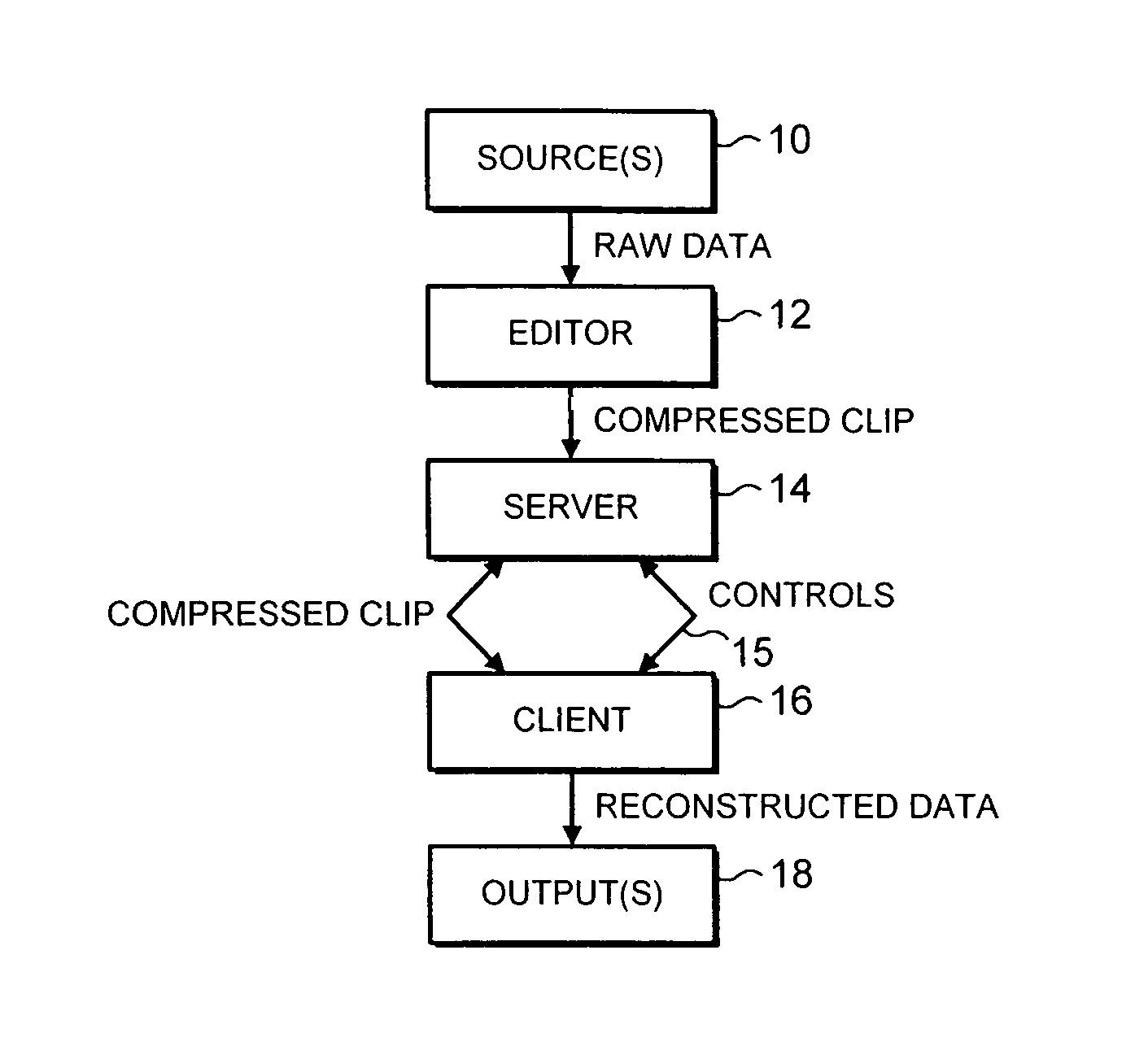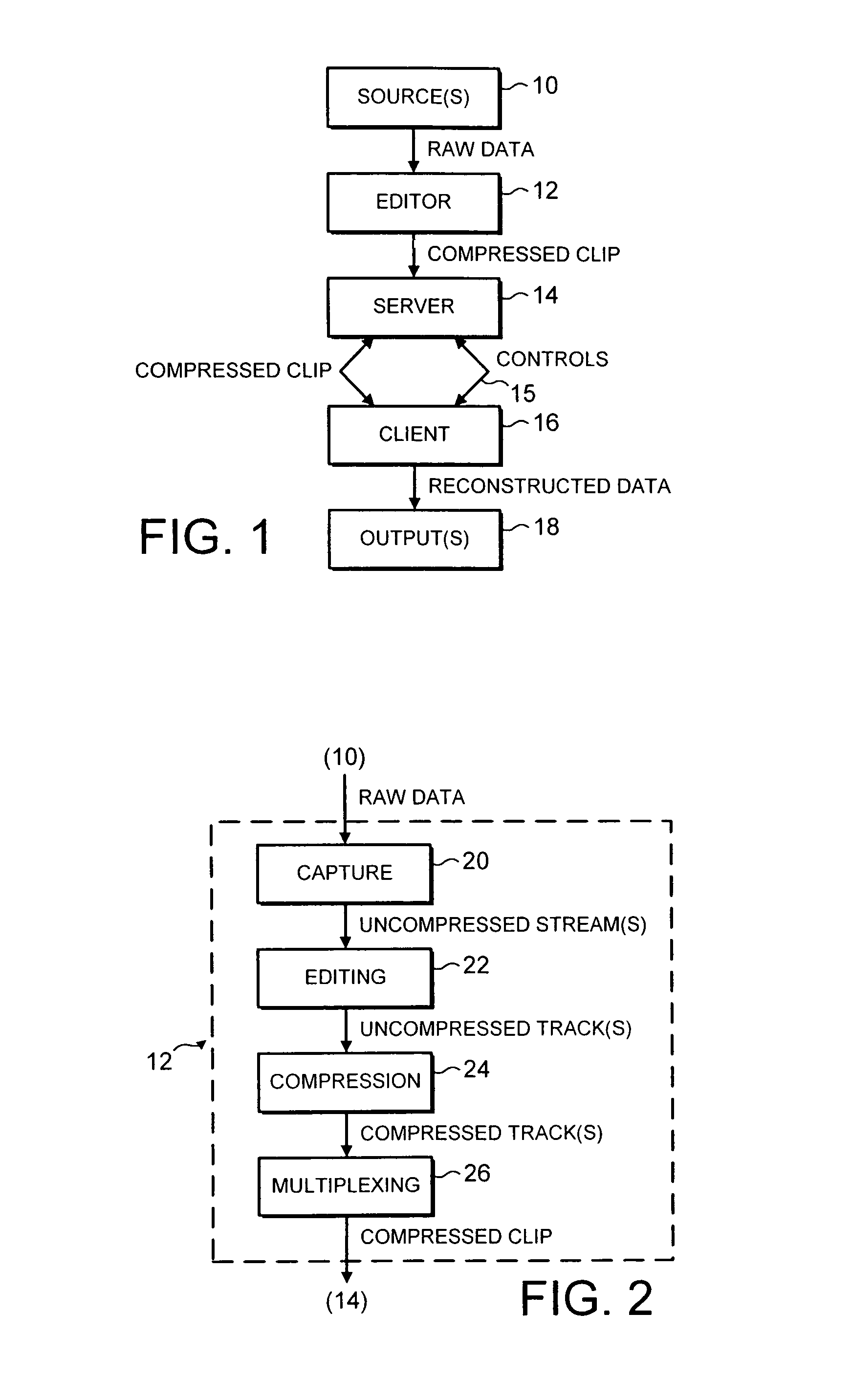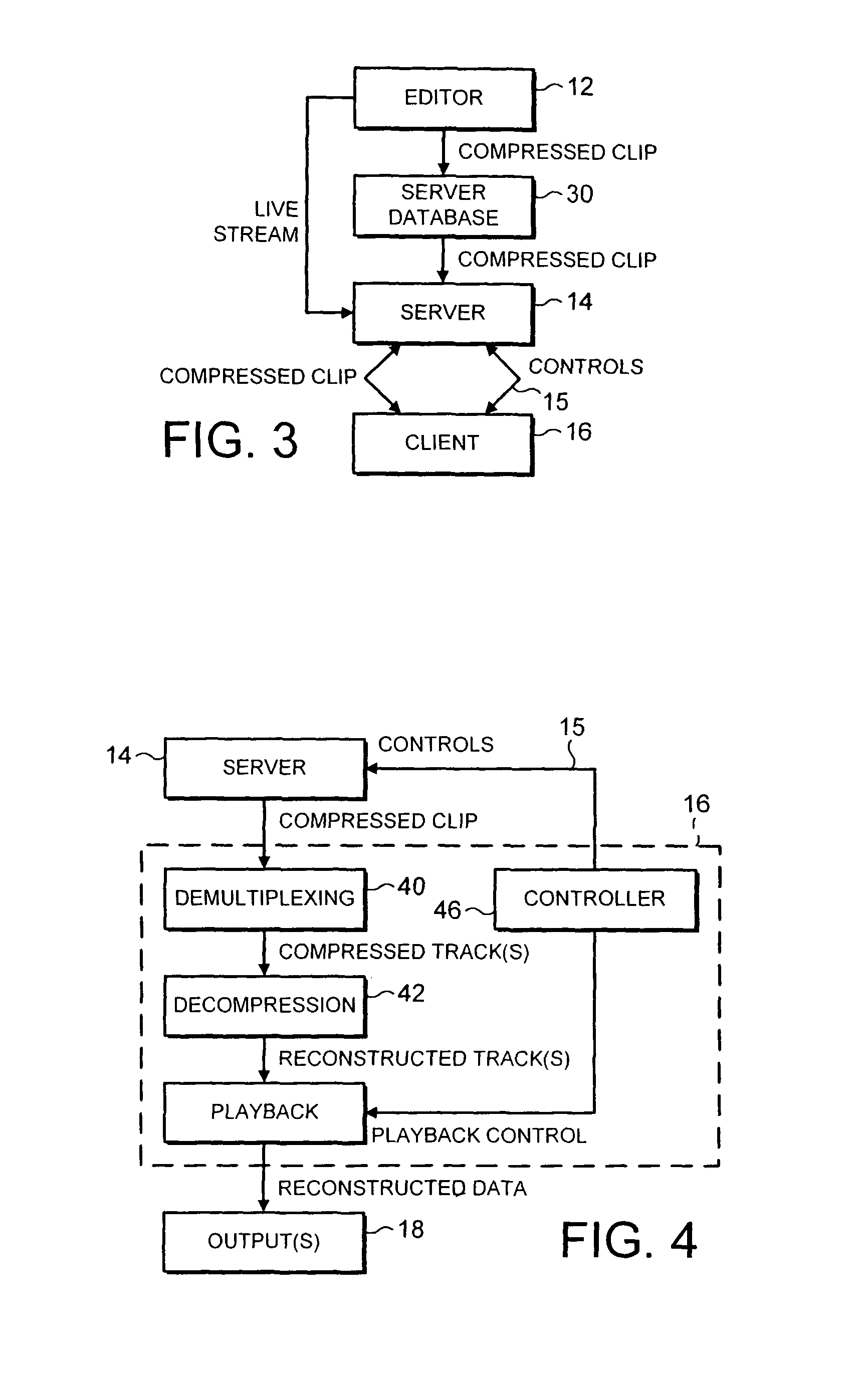Video error resilience
a technology of video error resilience and video data, applied in the field of video data transmission over communications networks, can solve the problems of large storage space required for raw multimedia data, prone to errors, and many megabytes, and achieve the effects of reducing the length of the prediction path, reducing the corruption of temporally predicted frames, and reducing the risk of errors
- Summary
- Abstract
- Description
- Claims
- Application Information
AI Technical Summary
Benefits of technology
Problems solved by technology
Method used
Image
Examples
Embodiment Construction
[0081]In order to gain a better understanding of the invention and the advantages it provides, a preferred embodiment of a video encoding method according to the invention will be described by example and by comparing FIGS. 7 and 8. FIG. 7 illustrates a compressed video sequence arranged in a conventional manner, while FIG. 8 illustrates a compressed video sequence, constructed according to the method of the invention. Both sequences represent the same image content and comprise a few consecutive frames of video forming part of a longer sequence. As before, frames coded in INTRA format are labelled generically using the reference number 50, and INTER frames are referred to by the number 54. The forward prediction process by which INTER frames are constructed is labelled 53, according to the previously used convention. At the beginning of both sequences there is a scene cut 70. While the following description concentrates on application of the method according to the invention in con...
PUM
 Login to View More
Login to View More Abstract
Description
Claims
Application Information
 Login to View More
Login to View More - R&D
- Intellectual Property
- Life Sciences
- Materials
- Tech Scout
- Unparalleled Data Quality
- Higher Quality Content
- 60% Fewer Hallucinations
Browse by: Latest US Patents, China's latest patents, Technical Efficacy Thesaurus, Application Domain, Technology Topic, Popular Technical Reports.
© 2025 PatSnap. All rights reserved.Legal|Privacy policy|Modern Slavery Act Transparency Statement|Sitemap|About US| Contact US: help@patsnap.com



